| Coach | NA |
| Venue | Estadio Malvinas Argentinas |
San Miguel predictions
Predictions for San Miguel: See upcoming and historic predictions for San Miguel below.
Disclaimer: Past performance does not guarantee future results. Betting involves risk; only wager what you can afford to lose. Always gamble responsibly.
San Miguel latest results
| 16/04 | - | ||
| 12/04 | - | ||
| 07/04 | 3 - 2 | ||
| 31/03 | 0 - 0 | ||
| 23/03 | 1 - 1 |
Primera Nacional standings
| Rank | Team | MP | W | D | L | GF | GA | GD | Pts |
|---|---|---|---|---|---|---|---|---|---|
| 1 |
 San Martin Tucuman
San Martin Tucuman
|
10 | 6 | 1 | 3 | 13 | 5 | 8 | 19 |
| 2 |
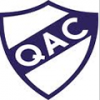 Quilmes
Quilmes
|
9 | 5 | 4 | 0 | 10 | 2 | 8 | 16 |
| 3 |
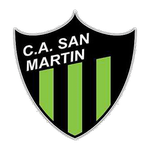 San Martin S.J.
San Martin S.J.
|
10 | 4 | 4 | 2 | 10 | 9 | 1 | 16 |
| 4 |
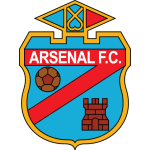 Arsenal Sarandi
Arsenal Sarandi
|
10 | 4 | 3 | 3 | 10 | 9 | 1 | 15 |
| 5 |
 All Boys
All Boys
|
9 | 3 | 5 | 1 | 7 | 5 | 2 | 14 |
| 6 |
 Agropecuario
Agropecuario
|
9 | 3 | 4 | 2 | 12 | 10 | 2 | 13 |
| 7 |
 Racing Cordoba
Racing Cordoba
|
9 | 3 | 4 | 2 | 8 | 7 | 1 | 13 |
| 8 |
 Alvarado
Alvarado
|
9 | 3 | 4 | 2 | 8 | 7 | 1 | 13 |
| 9 |
 CA Estudiantes
CA Estudiantes
|
9 | 3 | 4 | 2 | 5 | 5 | 0 | 13 |
| 10 |
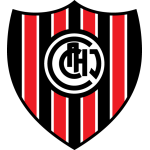 Chacarita Juniors
Chacarita Juniors
|
10 | 3 | 3 | 4 | 9 | 11 | -2 | 12 |
| 11 |
 San Miguel
San Miguel
|
9 | 1 | 7 | 1 | 5 | 5 | 0 | 10 |
| 12 |
 Tristan Suarez
Tristan Suarez
|
9 | 2 | 4 | 3 | 10 | 11 | -1 | 10 |
| 13 |
 Guillermo Brown
Guillermo Brown
|
9 | 2 | 4 | 3 | 8 | 9 | -1 | 10 |
| 14 |
 Talleres Remedios
Talleres Remedios
|
9 | 2 | 4 | 3 | 6 | 7 | -1 | 10 |
| 15 |
 Gimnasia Jujuy
Gimnasia Jujuy
|
9 | 3 | 1 | 5 | 7 | 9 | -2 | 10 |
| 16 |
 Ferro Carril Oeste
Ferro Carril Oeste
|
10 | 2 | 4 | 4 | 12 | 15 | -3 | 10 |
| 17 |
 Patronato
Patronato
|
10 | 2 | 4 | 4 | 6 | 12 | -6 | 10 |
| 18 |
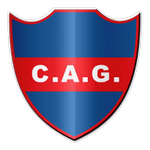 Club Atlético Güemes
Club Atlético Güemes
|
9 | 1 | 6 | 2 | 5 | 6 | -1 | 9 |
| 19 |
 Deportivo Maipu
Deportivo Maipu
|
9 | 2 | 1 | 6 | 7 | 15 | -8 | 7 |
About San Miguel
Club Atlético San Miguel, commonly known as San Miguel, is a professional football club based in San Miguel, Buenos Aires, Argentina. The club was founded on July 7, 1922, and has since established itself as an integral part of the local community, fostering a strong connection with its supporters.
San Miguel's colors are green and white, which are proudly displayed on the team's kit. The club's emblem features these colors and is a symbol of the team's identity and heritage. The team plays its home matches at the Estadio Malvinas Argentinas, which is located in the heart of San Miguel. The stadium, with a capacity of several thousand spectators, is known for its passionate and vocal fan base, which provides a formidable home advantage for the team.
Throughout its history, San Miguel has experienced a rollercoaster journey through the divisions of Argentine football. The club has spent the majority of its existence in the lower tiers, including the Primera C and Primera D, which are the fourth and fifth levels of the Argentine football league system, respectively. Despite not having the same level of success as some of the country's more prominent clubs, San Miguel has a dedicated following and is known for its fighting spirit on the pitch.
One of the club's most notable achievements came in the 1980s when San Miguel secured promotion to the Primera B Metropolitana, the third division of Argentine football. This period marked a high point in the club's history, as it competed at a higher level and gained wider recognition. The team's performances during this time helped to solidify its reputation as a resilient and competitive side.
San Miguel's youth academy is an essential aspect of the club's philosophy, focusing on developing local talent and providing opportunities for young players to progress through the ranks. This emphasis on youth development is a testament to the club's commitment to sustainable growth and community involvement.
The club has faced its share of challenges, including financial difficulties and relegation battles. However, the resilience and dedication of its management, staff, and supporters have always been the driving force behind its survival and occasional triumphs. San Miguel's community-oriented approach has helped it to maintain a loyal fan base, which remains the backbone of the club.
In recent years, San Miguel has continued to compete in the lower divisions of Argentine football, striving for promotion and aiming to achieve greater stability and success. The club's fans remain hopeful that with hard work, dedication, and a bit of luck, San Miguel will rise through the ranks and perhaps one day challenge for higher honors.
San Miguel's journey is a testament to the passion and perseverance that characterizes Argentine football, especially within the smaller clubs that form the heart and soul of the sport in local communities. As the club looks to the future, it carries with it the dreams and aspirations of its fans, who are ever ready to support their team through thick and thin.















